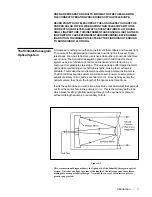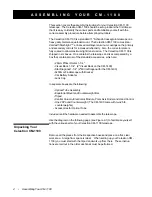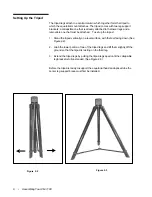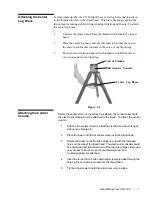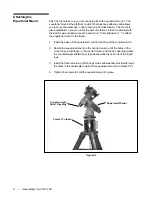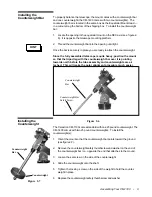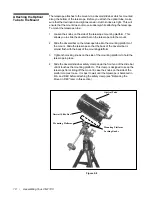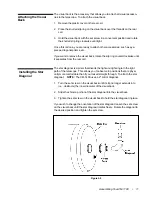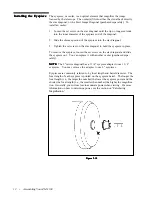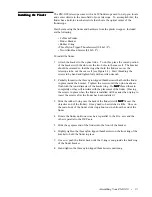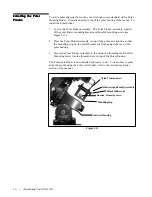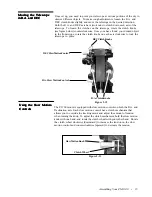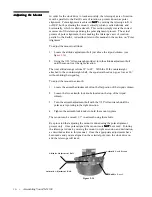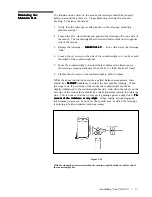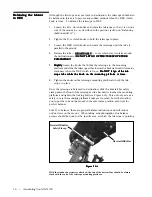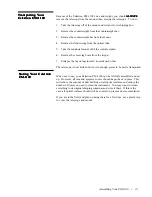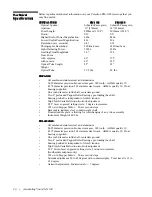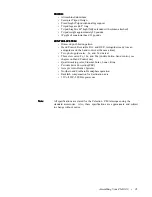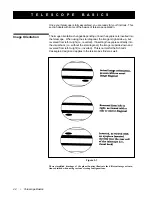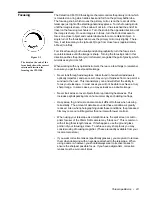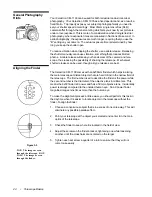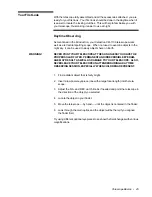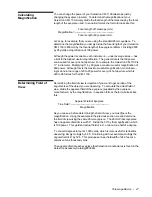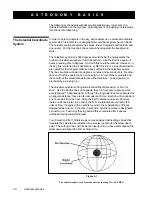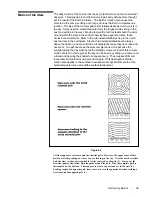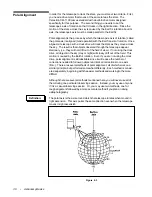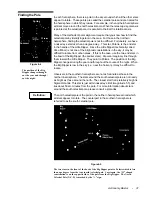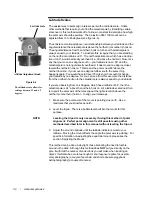
Assembling Your CM-1100 • 17
To eliminate undue stress on the mount, the telescope should be properly
balanced around the polar axis. Proper balancing is crucial for accurate
tracking. To balance the mount:
1. Verify that the telescope securing knobs on the telescope mounting
platform are tight.
2. Loosen the R.A. clutch knobs and position the telescope off to one side of
the mount. The counterweight bar will extend horizontally on the opposite
side of the mount.
3. Release the telescope — GRADUALLY
GRADUALLY
GRADUALLY
GRADUALLY
GRADUALLY — to see which way the telescope
“rolls.”
4. Loosen the set screws on the side of the counterweight so it can be moved
the length of the counterweight bar.
5. Move the counterweight to a point where it balances the telescope (i.e.,
the telescope remains stationary when the R.A. clutch knobs are loose).
6. Tighten the set screw on the counterweight to hold it in place.
While the above instructions describe a perfect balance arrangement, there
should be a SLIGHT
SLIGHT
SLIGHT
SLIGHT
SLIGHT imbalance to ensure the best possible tracking. When
the scope is on the west side of the mount the counterweight should be
slightly imbalanced to the counterweight bar side. And when the tube is on the
east side of the mount there should be a slight imbalance toward the telescope
side. This is done so that the worm gear is pushing against a slight load. The
The
The
The
The
amount of the imbalance is very slight.
amount of the imbalance is very slight.
amount of the imbalance is very slight.
amount of the imbalance is very slight.
amount of the imbalance is very slight. When taking astrophotographs,
this balance process can be done for the specific area at which the telescope
is pointing to further optimize tracking accuracy.
Balancing the
Balancing the
Balancing the
Balancing the
Balancing the
Mount in R.A.
Mount in R.A.
Mount in R.A.
Mount in R.A.
Mount in R.A.
Figure 2-15
With the standard accessories attached, the counterweight should be at the far end of
the counterweight bar.

